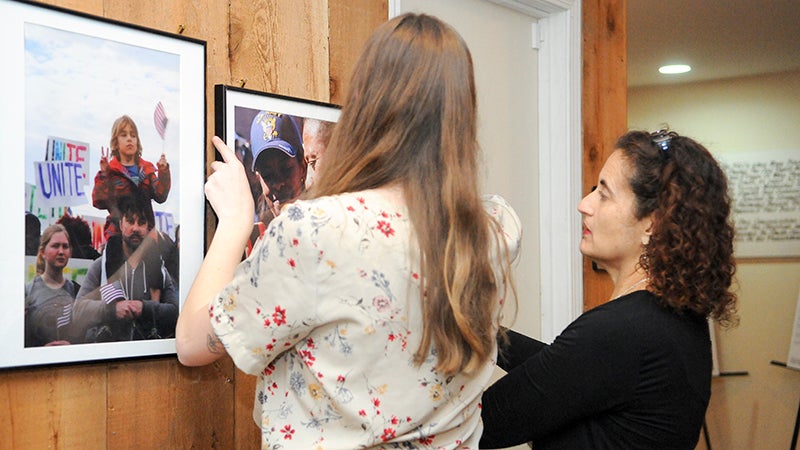New exhibit open at National Voting Rights Museum
Published 11:58 pm Tuesday, March 20, 2018

- Erica Jones, a student at the University of Wisconsin-Eau Claire, hangs a photo with professor Jan Larson Tuesday at te National Voting Rights Museum. (Oniska Blevins | Times-Journal)
By: Oniska Blevins
It had been half a century since Bloody Sunday when the University of Wisconsin-Eau Claire journalism students walked across the Edmund Pettus Bridge and took photos during the historical 50th Anniversary Jubilee celebration.
The celebration is held every year to commemorate those who fought for the voting rights of African American people in the south. As a part of their coverage of the event, the students took photos of the thousands of attendees to display a true image of where Selma was and is headed.
Their many photos are now on display at the National Voting Rights Museum.
Tuesday night, the museum held a reception to introduce the “Civil Conversations: We are Selma” exhibit to the community.
Started by, UW-Eau Claire administrator Jodi Thesing Ritter, this year marks the 10th Anniversary of the pilgrimage.
Since her first trip to Selma in 2011, University of Wisconsin-Eau Claire journalism professor Jan Larson, felt there was a story to be told in Selma.
She said she wants to give a voice to the voiceless and tell the stories that aren’t always told.
“These images show the pageantry of the celebration of the 50th anniversary, but they also show the reality of today,” she said.
National Voting Rights Museum administrator, Pearlie Walker said these types of exhibits highlight people that rarely receive the recognition they deserve for their part in the movement. As a part of their coverage of the 50th jubilee the students interviewed foot soldiers of the movement as well as citizens and asked them to complete the sentence “We are Selma and…”
The responses were on display as well and the community had the chance to hear from the foot soldiers themselves. Lynda Lowery, foot soldier of the Civil Rights Movement, said it means a lot to see the students share the history and stories of people who aren’t always recognized or well known.
“I couldn’t talk about what happened to me or the things that I saw growing up until 42 years after it happened,” she said. “This means a whole lot.”
The exhibit is now a permanent part of the National Voting Rights Museum. The Civil Rights Pilgrimage will conclude in Tennessee after 10 days of travel.





